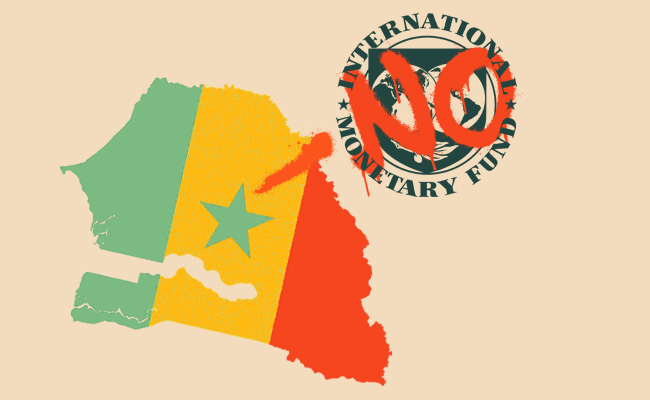Much of the developed world industrialised on the back of Africa’s resources, a historical fact that is often politely brushed aside in climate negotiations but ought to be stated plainly.
Copper from Zambia, oil from Nigeria, cobalt from the Congo, gold and platinum from South Africa – all extracted and shipped to fuel factories, armies and consumer goods in Europe and the US. The emissions, of course, were booked elsewhere. Today, Africa accounts for less than 4% of global greenhouse gases, yet it is Africans who swelter through ever-longer droughts in the Sahel, rebuild villages after cyclones in Mozambique, and watch crops wither under erratic rain.
It is fashionable to declare that Africa needs to “find African solutions”, a phrase that rings noble and self-determining. But the cold arithmetic of the energy transition makes the aspiration look forbidding. The International Energy Agency estimates that Africa will require more than $200bn annually by 2030 to meet its climate and energy goals.
That is more than double current levels of total investment on the continent. The West, meanwhile, is distracted – the US has staggered in and out of the Paris Agreement, and Europe, while rhetorically committed, finds its treasuries increasingly spoken for by defence budgets and migration management.
So the question is: who pays?
Sovereign and multilateral models
The AU’s recent proposal for an African Climate Facility is a bold attempt to put local institutions in the driver’s seat. The African Development Bank, Afreximbank and commercial lenders like Ecobank are named as anchor financiers, with the aim of mobilising $50bn annually. If that money truly comes from African governments, pension funds and financial markets, it would mark a significant shift – a kind of fiscal sovereignty in climate finance. Yet one must ask: can balance sheets already straining under debt burdens, from Ghana to Zambia, absorb such a task without crowding out health and education?
One promising model is blended finance, where concessional money from development banks or philanthropies derisks private capital. The World Bank’s new climate-linked lending facilities, for instance, are experimenting with tying loan terms to verifiable emission reductions or resilience outcomes. The AU could design its facility to attract sovereign wealth funds from the Gulf or Asia, which want access to Africa’s critical minerals and energy markets but balk at political risk. Guarantees from multilateral institutions could help sweeten the deal.
Domestic revenue and carbon markets
A second path is painfully obvious but politically fraught: tax reform and domestic revenue mobilisation. According to the African Tax Administration Forum, African states collect on average just 16% of GDP in tax revenue – well below the global average of 33%. Without tackling illicit financial flows, base erosion and sweetheart deals for multinationals, there will never be enough fiscal space to self-finance the transition. Kenya’s experiment with a carbon tax on fuel imports, though modest, points to what could become a broader toolkit.
Linked to this is the expansion of carbon credit markets. Gabon, for example, has pioneered sovereign carbon credits tied to its forests, selling offsets to corporations eager to polish their climate credentials. Critics rightly warn that such schemes risk commodifying ecosystems and delaying decarbonisation elsewhere. But if properly regulated – and priced fairly – carbon markets could funnel billions directly into African treasuries or conservation trusts.
Mineral leverage and strategic bargaining
The continent also sits atop the minerals the world needs for its green revolution. Congo produces 70% of the world’s cobalt; Guinea’s bauxite feeds global aluminium; Zimbabwe and Namibia hold critical lithium reserves. Too often these are exported as raw ores, with minimal beneficiation.
An African bargaining strategy could tie access to these minerals to local value addition and transition funding. Indonesia has shown the way by banning raw nickel exports until investors agreed to build smelters and battery plants locally. Why should Africa not do the same, linking cobalt to grid financing or lithium to renewable infrastructure?
Diaspora bonds and innovative finance
There are also more experimental mechanisms. Diaspora bonds – long touted but rarely scaled – could mobilise Africa’s global diaspora, whose remittances already exceed foreign direct investment. The reason they have not scaled is that the diaspora remittances are sent so people have money to exist, not for long-term investment. But it might be possible to use the derisking strategies to attract real diaspora investment money that currently won’t look at the continent, for the same reasons as any other investor.
If marketed transparently, tied to visible renewable projects, and insulated from political meddling, such instruments could raise billions. Similarly, green sukuk (Islamic finance-compliant bonds) have been successfully issued in countries like Indonesia and Malaysia; African economies with large Muslim populations, from Nigeria to Senegal, could replicate this to finance solar and wind.
The politics of scale
But ultimately, the challenge is not just economic; it is political. The scale of Africa’s youth population – 600-million under 25s – is either an unparalleled dividend or a time bomb. Without jobs, training and power grids that actually function, the transition becomes not just a climate issue but a security one. Leaders will need to prove that new funding compacts are not merely technocratic exercises, but vehicles for hope and opportunity.
In Addis Ababa this month, African leaders declared their intention to make the continent “a driver of solutions and the next global climate economy”. Fine words. But unless Africa mobilises its own banks, leverages its minerals with more discipline, and designs financing that inspires trust at home and abroad, the rhetoric will collapse under the weight of unmet expectations.
The potential for success will only be realised if Africa works together. If one African country signs a bilateral deal it effectively removes continental leverage. The question of how Africa funds its energy transition is therefore inseparable from the question of how Africa governs itself. Financing the transition is not a technical exercise; it is the continent’s most consequential political project of the century.
Top image: Rawpixel/Currency collage.
Sign up to Currency’s weekly newsletters to receive your own bulletin of weekday news and weekend treats. Register here.












